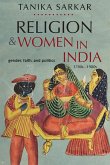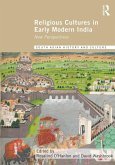The area we know as India is nearly half as large as the United States. Its population is three times greater than ours. Its import and export trade-as yet but the germ of the possible-amounted, in the year 1924-25, to about two and a half billion dollars.[1] And Bombay is but three weeks' journey from New York. Under present conditions of human activity, whereby, whether we will or no, the roads that join us to every part of the world continually shorten and multiply, it would appear that some knowledge of main facts concerning so big and today so near a neighbor should be a part of our intelligence and our self-protection. But what does the average American actually know about India? That Mr. Gandhi lives there; also tigers. His further ideas, if such he has, resolve themselves into more or less hazy notions more or less unconsciously absorbed from professional propagandists out of one camp or another; from religious or mystical sources; or from tales and travel-books, novels and verses, having India as their scene.
Dieser Download kann aus rechtlichen Gründen nur mit Rechnungsadresse in A, B, BG, CY, CZ, D, DK, EW, E, FIN, F, GR, HR, H, IRL, I, LT, L, LR, M, NL, PL, P, R, S, SLO, SK ausgeliefert werden.









